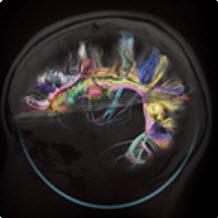
The National Institutes of Health is hosting the Multimodal TMS Speaker Series to bring together the leaders in the field conducting research using non-invasive brain stimulation and functional imaging including EEG and fMRI. The event will be broadcast via web-ex and archived for later viewing.
Bradley Postle will be speaking on June 28, 10:00 am.
Abstract:
Physiological probe? Yes. Virtual lesion? Sometimes. Entrainer of rhythms? Probably not.
Transcranial magnetic stimulation (TMS) is a remarkably flexible tool that has been applied productively to many different scientific and clinical problems. My group’s experience with TMS, however, indicates that the actual effects of TMS, whether considered from the standpoint of its effects on the physiology of individual brains, or from the standpoint of its effects on aggregate patterns of behavior, don’t always conform to a priori notions about how it “should” work. This talk will consider many applications of TMS – as a physiological probe, as a means of creating virtual lesions (in both “offline” and “online” applications), and as a putative tool for entrainment – and, in each type of application, use concurrently collected physiological signals (from electroencephalography (EEG) or from functional magnetic resonance imaging (fMRI)) to empirically inform our ideas about how TMS can, and, in some cases, how it probably cannot, influence brain functioning and behavior.
